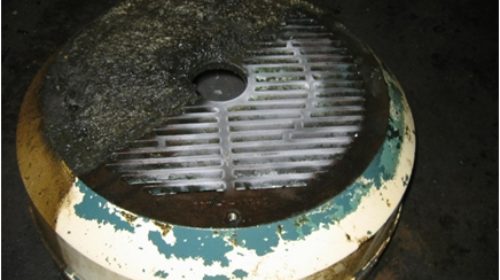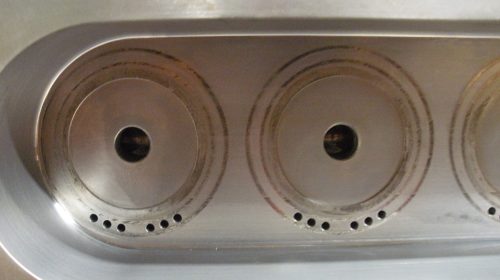
Dry ice blasting minimizes chemical use and provides a higher quality clean
THE SITUATION
InfoPrint Solutions Company was formed in 2007 as a result of a joint venture between IBM’s Printing Division and Ricoh. The company combines IBM’s more than 40 years of enterprise printing experience with Ricoh’s office solutions leadership delivering a variety of hardware, software and services, including high end workgroup, production and industrial printers. In addition to providing new solutions, the company also has an extensive refurbishing process that restores used printers to like-new condition.
THE PROBLEM
Key to the refurbishing process is making sure that the printer is cleaned thoroughly. InfoPrint’s high-end continuous forms printers, for example, are known for their quality and durability with production speeds of more than 150 impressions per minute. The printers are typically used in environments that demand a lot from their printers, so when used printers are returned to InfoPrint for refurbishing, they come with baked on residual toner and other contaminants that can be difficult to remove. For Gary May, manufacturing engineer for InfoPrint, cleaning a returned printer can take two people up to eight hours; the most difficult and tedious part being removing the residual toner.
Traditionally, May and his engineering group would scrub the equipment by hand with chemical solvents. Even with the strong chemicals, the process would not remove the baked on toner satisfactorily.
May commented, “While our cleaning solutions did not impact our refurbishing process to the point of the quality of the end-product, we did have to work hard to achieve the desired result. As we recently had a successful ISO 14001 audit and are in the process of obtaining certification, we wanted to reduce our dependence on chemical solvents. We tried several milder cleaning solutions, but none worked very well. It was during this evaluation process that we had a demonstration of Cold Jet’s precision dry ice blast cleaning systems. We were impressed with its ability to clean the contaminants from the printer safely, which also minimized our need to use chemicals.”
THE SOLUTION
InfoPrint installed a Cold Jet i3 MicroClean cleaning system, which features Cold Jet’s patented shaved ice technology. The precision system allows InfoPrint to clean delicate surfaces and hard-to-reach cavities that can be difficult to access by hand. The i3 MicroClean also allows users to control the velocity and size of the dry ice, and features nozzles that can blast dry ice the size of pencil lead.
Dry ice blast cleaning uses recycled CO2 in the form of solid dry ice particles that are transported by high-velocity airflow to remove contaminates from surfaces. The dry ice particles are accelerated through high-velocity nozzles to impinge upon the surface being cleaned. The combination of the kinetic and thermal gradient effects breaks the bond between the toner residue and the surface; the toner falls away from the surface and is easily removed.
The dry ice particles sublimate (transition from a solid to a gas without passing through the liquid stage) upon impact, leaving no other cleaning by-product, and therefore eliminating the added cost and inconvenience of secondary waste treatment and disposal. Dry ice blasting is also a dry process, and therefore non-conductive, meaning it can be used to safely clean electronic components.
May commented, “The fact that dry ice blasting is a non-abrasive and dry cleaning process is important when considering the delicate parts we are working with inside a precision printing system.”

